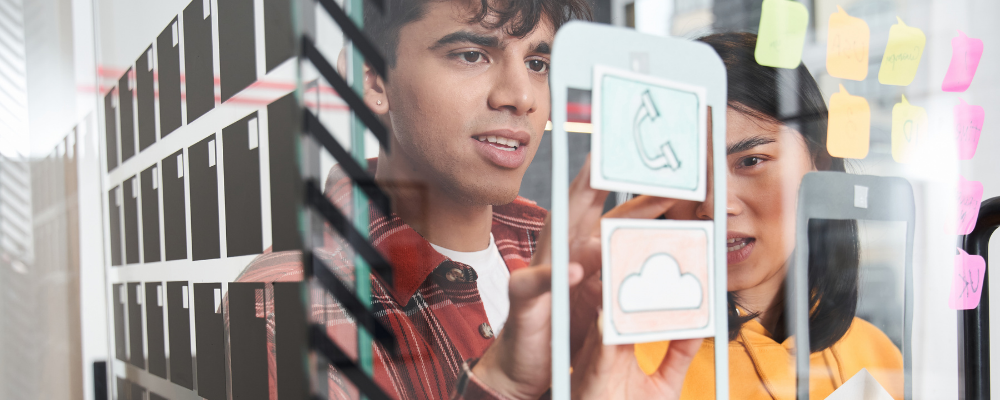This current era of science and technology is concerned with buying and selling services online. This means that the user experience of a digital product or service is key. That includes product design, content, and display. This post uncovers several benefits of learning UX design, so let’s dig into the details.
Benefits of Learning UX Design
-
Learning a lot more than just UX design
UX design includes using multiple tools and procedures for designing reliable products, as well as the application of certain features to solve real problems occurring in these products.
Below are some important steps that are the basic elements of every design:
- Spending some time understanding the needs the design seeks to meet
- Hypothesizing different solutions for meeting those needs
- Establishing a prototype for your product
- Validating and testing the prototype before moving to the next stages of the design process
Some accessory skills that are required for building your UX design skills are:
Helping the client
Before digging into the UX design process, the designer has to come up with multiple solutions to resolve different user problems. The best way to achieve this is by understanding the client’s requirements, as well as their needs.
Communication
As a UX designer, you will interact with a diverse spectrum of people, from engineers to marketing professionals to other designers. One needs to grasp collaboration, idea exchange, and effective communication.
UI design
UX and UI design are linked in a very important way. Therefore, it’s a good idea to devote some time to understanding UI design. Start with the foundations of UI design, like typography and color. Then work your way up to more complicated tasks, like building UI patterns.
-
Making a difference in someone’s life
UX design is for the people who use a product or service, not for engineers or stakeholders. As a result, the most crucial aspect of user experience design is the user.
Taxi services, for example, did not have good user experience just a decade ago. To request a cab, you had to call a taxi company, and rides were occasionally limited until Uber arrived and transformed the business. It takes less than a minute to order an Uber ride.
All of this occurred because Uber approached the problem from the user’s perspective and developed a fantastic app and user experience to address it.
People are at the center of the design process with this user-centric approach. It’s important to conduct user research and usability testing to help you gain perspective on what the user needs and likes. This will assist you in determining your project objectives.
-
Driving the company’s expansion
Product performance in the marketplace and user experience are linked. When your users have a positive experience with your product, they are more inclined to stick with it and suggest it to others.
For all types of platforms, apps, and websites, UX design is critical. Take, for example, eCommerce websites. You want to make it as simple as possible for visitors to find what they’re looking for and place an order. This is something that UX design can help you with.
Three of the top 12 causes for project failure are related to the user experience. The money you spend on UX will pay you in the form of increased revenue and satisfied consumers.
-
Working with cutting-edge technology.
UX design is a rapidly expanding field that has been named one of the top ten most in-demand hard skills by LinkedIn. A career in user experience design will place you at the cutting edge of digital innovation.
Augmented reality and voice-based interfaces will see a rise in demand for user experience designers in the coming years. It’s never too early to get involved in creating and developing new human habitats.
What are the best methods for learning UX design?
The path to a job in UX design is far more straightforward than you may expect, and you don’t even need a college diploma in most cases. Product design experience and a good user experience portfolio are very important.
-
Read books to learn the fundamentals
Do your best to become well-versed in the field of experience design by immersing yourself in as much reading and research as possible. As a result, your practical skills and understanding will grow. Here are some worthwhile reads to get started:
Don Norman’s “The Design of Everyday Things” is a book about the design of everyday objects. This book will assist one in comprehending the fundamental concepts of human-centered design, as well as how good design differs from bad design.
Alan Cooper’s book, “About Face: The Essentials of Interaction Design,” has powerful and practical techniques for creating amazing web and mobile products. Cooper’s Goal-Directed Design technique, which entails in-depth user research, will also be covered.
Steve Krug’s “Don’t Make Me Think” also teaches important usability principles that should be learned by all product designers.
Susan Weinschenk’s book, “100 Things Every Designer Should Know About People,” is a collection of 100 things every designer should know about people. On a page or screen, what draws and holds the viewer’s attention? What causes you to recall memories? This book contains the solutions to these questions.
Read More: Books that will teach you how to crack the behavioral and UX design codes
-
Learn from other sources
Following that, you must understand how UX designers use their knowledge to solve real-world user issues. Here’s a quick rundown of places where you can find this kind of information:
Smashing Magazine is one of the most well-known and respected web design and development publications in the world. You can find great articles about usability, information architecture, interaction design, and other UX-related subjects for both digital (web, mobile, desktop apps) and physical products in the User Experience section.
Joshua Porter’s 52 Weeks of UX is a really useful online guide that tackles practical advice for designing for real people.
When it comes to user experience, Nielsen Norman Group is a go-to source. Their research and articles will keep up to date on the latest industry news and other relevant information.
The Interaction Design Foundation helps anyone who wants to get started in product design or who wants to improve their presentation skills. In addition to informative content, the website also offers a wealth of learning resources.
-
Dedicate time to developing your UX design portfolio
UX designers must have an impressive portfolio before they can land a job in the field. If interested in a career in UX design and have previous UI design expertise, you should mention two or three projects that you are most proud of in your resume and cover letter. Approach each project from the user experience perspective, focusing on the value the design and usability brings to people.
Conclusion
Because UX design is a complicated subject that requires a lot of different skills, it may take some time to learn. It will be worth it, though, when you solve real-world problems. Seeing how people use the products you design and how good it makes them feel will make you keep going on your UX design journey.
You may also be interested in:





